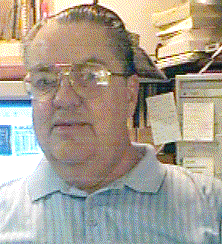A nice Website:
Barcode Clock
Gift from:
Barcode Art
| Translators |
Origins |
Various |
Good - Bad |
Ancients |
Modern I |
Modern II |
666: Beast |
999: Anti-Beast |
Bars Codes |
Devil's Square |
God - Trinity |
Maths 666 |
References |
|
Webmaster:
666 engraved in the Bars Codes
Barcode nature
The first barcode, the Universal Product Code (UPC), was invented by George J. Laurer in 1973. Actually, while he was an employee with IBM, Mr. Laurer was assigned in 1971 the task "to design the best code and symbol suitable for the grocery industry".
Notes: BWB = Black-White-Black; WBWBW = White-Black-White-Black-White
Source: Barcode Art by Scott Blake
Left Hand Guard Bars - These bars serve as a starting reference point for the scanning devices.
Number System Character - This digit identifies the type of manufacturer or how the bar code will be used. For example 0, 6, and 7 are generally used in the retail industry, while 3 is assigned to the health and drug manufacturing industries.
Number System Bars - These bars correspond to the Number System Character.
Manufacturer ID Number - Each company must apply for a Universal Product Identification Number with the Uniform Code Council. The UCC assigns each company a unique six digit identification number for use on all of their products. The number is composed of the Number System Character and a five digit manufacturer's code.
Manufacturer ID Bars - These bars correspond to the Manufacturer's ID Number.
Tall Center Bar - These bars serve as a middle reference point for the scanning devices.
Item Number - Each company is responsible for assigning a unique five digit number to each of their products.
Item Bars - These bars correspond to the Item Number.
Modulo Check Character - This digit is derived from a mathematical formula based on the unique set of numbers in each bar code that helps ensure the accuracy of the data scan.
Modulo Check Bars - These bars correspond to the Modulo Check Character.
Right Hand Guard Bars - These bars serve as an ending reference point for the scanning devices.
666 "Hidden" in the UPC barcode?
Is the mark of the beast 666 "hidden" in the UPC barcode? The Answer given on his website by George J. Laurer,the developer of UPC in 1973 and later EAN barcode, is YES. Here after is the story, from the page "U.P.C. Questions about 666"
George J. Laurer
Question #1
Rumor has it that the lines (left, middle, and right) that protrude below the U.P.C. code are the numbers 6,6,6... and that this is the international money code. I typed a code with all sixes and this seems to be true. At least they all resemble sixes. What's up with that? 11/11/98
Answer
Yes, they do RESEMBLE the code for a six. An even parity 6 is:
1 module wide black bar
1 module wide white space
1 module wide black bar
4 module wide white space
There is nothing sinister about this nor does it have anything to do with the Bible's "mark of the beast" (The New Testament, The Revelation, Chapter 13, paragraph 18). It is simply a coincidence like the fact that my first, middle, and last name all have 6 letters [George Joseph Laurer]. There is no connection with an international money code either.
For more hogwash about 666 implications of the U.P.C., government form numbers, other publications, codes and the like, see Mary Sterwart Relfe's book "The New Money System". Such hype about the U.P.C. has been around since 1973.
Please also see Section 3.
Question #2
You state that the presence of "666" (left, middle, and right) in bar codes has no relation to the Biblical scripture referring to that number. However, you do not state where you came up with that number. Was it purely random (which I doubt, since you probably put great thought in every aspect of your invention), or does it serve a purpose? Or does the bar/space representation of a "6" just provide for a ascetically good separator? 2/25/99
Answer
No bars are there for esthetic purposes, to do so would defeat the goal of making the tolerances as great as possible and the area as small as possible.
Each character is a fixed length, 7 modules and composed of two spaces and two bars. Form the outer ends toward the center, the character starts with a space and therefore a single bar is required to "close" the character. The other bar is used to allow the level setting (gain) circuitry to adjust to the contrast of the particular symbol. The center pattern is narrow space, narrow bar, narrow space, narrow bar. This pattern is 4 modules wide and distinguishes it from the a 7 module character thus giving direction and end information to the logic.
The assignment of digits to specific patterns was arbitrary.
Please also see Section 3.
666: Bivalent Myth |